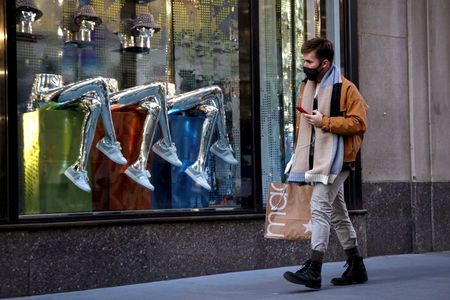US inflation surges at fastest pace in over a decade

US inflation rose at the fastest pace in over a decade last month as severe supply constraints and shortages of key raw materials drove prices up sharply, according to new figures released on Tuesday.
The US consumer price index rose 5.4 per cent annually in June, the largest increase since August 2008.
The US CPI also jumped 0.9 per cent over the last month, the highest increase since June 2008, the Labour Department said today.
Read more: UK inflation jumps to 2.1 per cent in May as clothing and fuel prices rise
Excluding the volatile food and energy components, CPI rose 0.9 per cent after rising 0.7 per cent in May.
The rise in prices has been driven by bottlenecks in supply chains causing severe shortages of key inputs used in firms’ production processes. Widespread scarcity is prompting companies to compete with one and another to secure materials, which is putting upward pressure on prices.
Price pressures have been supported by a sudden burst in consumer spending as the US lifts Covid-induced restrictions on economic activity. Demand has been shielded by stimulus measures protecting households’ income during the pandemic. Typically, consumers rein in spending during times of economic decline.
Inflationary pressures are now starting to bleed into the services side of the economy where firms are struggling to hire workers and increase capacity to cope with soaring demand.
Ambrose Crofton, global market strategist at J.P. Morgan Asset Management, says: “In recent months, price pressures have been most concentrated in goods products where there has been the perfect storm of huge demand – thanks to the strength of consumers’ finances – combined with bottlenecks in supply chains raising businesses’ input costs.”
Read more: Haldane: Inflation will reach four per cent this year
“But now with the reopening in full swing, the price pressures on the services side of the economy, where many businesses are still struggling to hire workers to meet demand, are also rising.”
Economists polled by Reuters had forecast the overall CPI would climb 0.5 per cent and the core CPI would rise 0.4 per cent.
Price rises for used cars contributed significantly to the headline inflation rate, advancing 10.5 per cent. A global semiconductor shortage has choked the supply of new cars, forcing prospective buyers to seek out second-hand cars as substitutes.
Hinesh Patel, portfolio manager at Quilter Investors, says: “Underlying inflation remains aligned with previous years, but we must acknowledge the risk that inflation may be elevated for a few quarters longer than previously anticipated as the rollover from used cars makes way for a greater contributions from fuel prices and airfares as travel and services pick up.”
The UK will report its inflation figures on Wednesday morning.
Persistent inflation shocks cause for concern for Fed
Persistently higher than expected inflation figures will be a cause for concern for the US Federal Reserve that should prompt the central bank to retreat from its ultra-loose monetary policy stance, analysts have warned.
“The consistent upside inflation surprises of recent months suggest that it is no longer appropriate for the Fed to have its foot firmly on the accelerator” Crofton added.
However, others have chimed with the Fed’s position that the string of price rises are purely transitory.
Ron Temple, co-head of multi asset and head of US equities at Lazard Asset Management, says: “Don’t be alarmed by today’s CPI print – the reading is clearly inflated by a few transitory factors.”
Read more: PMI: US services industry extends resurgence into June
Aaron Anderson, SVP of research at Fisher Investments, says: “I hardly ever agree with central bankers, but I begrudgingly acknowledge elevated inflation should be temporary.
“Economic actors should respond to higher prices by adding capacity, which helps alleviate supply shortages.”
But, other analysts highlighted that the latest crop of figures indicated that inflation could be much stickier than initially expected.
“Commodity and labour costs are big contributors this time… the main concern will be that this is more entrenched” said Neil Birrell, chief investment officer at Premier Miton.
Yields on ten-year Treasuries jumped to 1.39 per cent on the data, before falling back to 1.34 per cent.